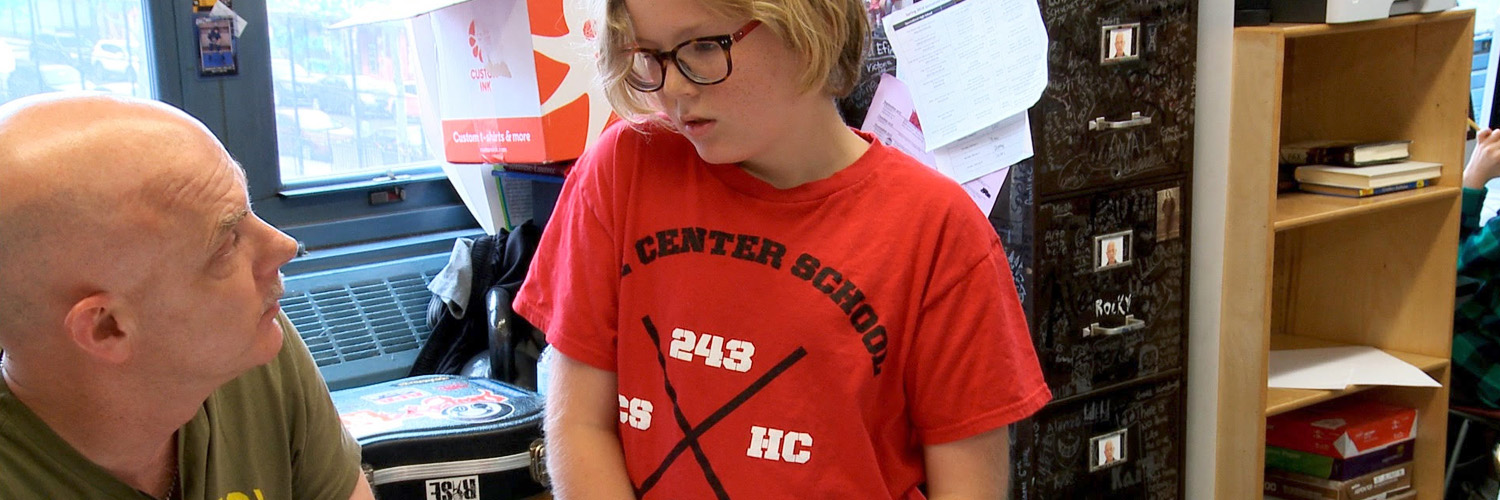AMLE 22 – SAMPLE BONUS CLIP
The Changing By The Minute documentary tool kit includes a 10 minute film, 62 minute film and discussion guides to use the films with teachers, teacher candidates and students in school and after school.
The tool kit also includes 16 small clips like the one below – providing additional jumping off places for conversations in short sessions. The clips are bonus material that does not appear in the main films.
The clip about social identity could be used for conversations with:
- teachers in professional development
- new teachers
- teacher candidates
- 10-14 year olds in school and after school
- parents and families
Discovering Who You Want To Be: Social Identity
Conversation Starters
(Suggestion: Divide participants into small groups or pairs to encourage participation and decrease the pressure of speaking to a larger group).
For teachers and teacher candidates:
- What identities do your students bring to school with them?
- How do these compare to your own personal social identity now as an adult, or when you were an early adolescent.
For 10-14 year olds :
- What do you notice about the students in this footage?
- How do their experiences and thoughts compare to your own?
For parents and families:
- What do you notice about the students in this footage?
- How do these compare to your own personal social identity now as an adult, or when you were an early adolescent.
- How do they compare with your own child(ren)’s experiences?
Use the documentary tool kit to…
… CHANGE THE NARRATIVE
The Changing By The Minute documentary tool kit materials are intended to encourage professionals, students, and families to think optimistically and creatively about this period, in order to relieve some of the stress and distress experienced by 10 -14 year olds. Early adolescence is a period of profound growth (matched in magnitude of change only by infancy) but also a dynamic and bountiful time when children lay the groundwork for who they want to be and who they don’t want to be.
The tool kit is designed for use with a variety of audiences, in order to:
- Engage 10-14 year olds in meaningful and inclusive conversations as they respond to the film, fostering a sense of social emotional well being and school belonging*
- Educate teacher candidates, school counselor candidates, and new out-of-school time staff about the developmental needs of early adolescents so they can work more effectively with them
- Catalyze dynamic professional development sessions with educators, administrators, out-of-school program staff, and ELT (expanded learning) providers about school practices that foster positive youth development and a sense of belonging
- Educate families about what to expect during these years and reverse the narrative of this period as a negative time
… BUILD A SENSE OF BELONGING
Sixteen million early adolescents attend 5-8th grades in the US public schools each year.
Both the short and long films can be used directly with 10-14 year olds to engage them in inclusive conversations that build meaningful connections between each other, and adults. Both films can also be used to launch discussions with educators and counselors about how to foster a sense of school belonging in youth.
The documentary tool kit has been designed for use with both new and more experienced teachers, counselors, and out-of-school-time staff. The films provide a jumping off place for educators to explore the social and emotional learning needs of young adolescents, while reflecting on their own knowledge, skills and attitudes in this critical area.
Research on social emotional learning has revealed the benefits of such programs and curricula across the schooling continuum and researchers have noted their particular salience in middle school (MacDonnell et al., 2021; Strahan & Poteat, 2020), due both to the plasticity of neural networks at this age (Fandakova & Hartley, 2020) and students’ increased interest in autonomy and belonging (Williams et al., 2019).
Changing By The Minute
An independent feature documentary and tool kit for use with 10-14 year olds, teachers and administrators, after school and out of school time staff, parents and guardians. One year in the Center School in NYC, principal Elaine Schwartz.
Director/Producer Camilla Calamandrei
Copyright 2022 Rolling River Films
RollingRiverMedia@gmail.com

